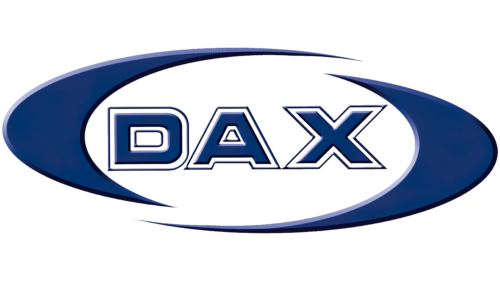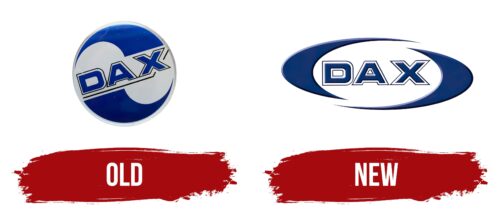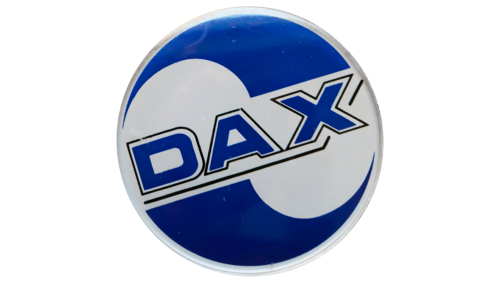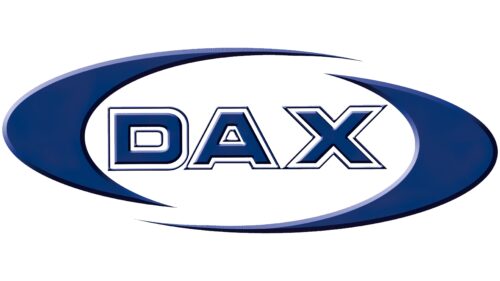The Dax Cars logo is like a whirlwind of two blue crescents from which the brand’s cars emerge. They embody dreams and the pinnacle of technical perfection. The owner receives a piece of the dynamic modern world.
Dax Cars: Brand overview
Dax Cars, a well-known name in the British sports car industry, originated in 1968 when Derek Jones founded DJ Sportscars International. The company initially focused on fiberglass molding but soon switched to car manufacturing and, in 1970, introduced its first car, the DAX GT. This car, a replica of the AC Cobra, marked Dax’s entry into the world of sports cars and laid the foundation for its future success.
Throughout the 1970s, Dax continued to build on its reputation as a Cobra replica manufacturer. The company introduced new models, such as the DAX Tojeiro and DAX Rush, expanding its lineup. These cars further strengthened Dax’s position in the sports car market.
Dax focused on producing the iconic DAX Cobra model in the following decades. In the 1980s and 90s, the company refined the existing design and produced distinctive variants, such as the DAX Venom with an extended body. With this commitment to innovation, Dax has produced over 10,000 sports car kits and turnkey assemblies, making it one of the most prolific Cobra replica manufacturers.
Throughout its history, Dax has gone through several changes of ownership. From its founder, Derek Jones, the company went from Graham Walker and Roger Brown. 2017, a new chapter began when John Cox purchased Dax and resumed production of the Dax 427, keeping the legacy sports car models intact.
Today, Dax continues the tradition of building Cobra-inspired sports cars by producing the Dax 427 and other models in limited quantities. The company’s prefabricated cars are shipped worldwide and attract enthusiasts looking for the unique blend of nostalgia and performance offered by Dax. Through innovative designs and a commitment to quality, Dax has maintained its place in the hearts of sports car enthusiasts worldwide.
Meaning and History
What is Dax Cars?
It is a British car manufacturer known for producing prefabricated cars and replicas. The company specializes in creating high-quality replicas of classic sports cars, particularly the AC Cobra and other iconic models. The company offers kits that allow you to build your cars and fully assembled cars. The brand caters to car enthusiasts who appreciate vintage design and modern engineering.
Old
Dax Cars presents its logo, which captures the brand’s essence and philosophy. The logo features a steel sphere with deep blue shades and dynamically intertwined metal waves. This image symbolizes the speed, energy, and power inherent in Dax racing cars. The logo’s interaction of colors and materials evokes the harmony of yin and yang, where each element plays a key role in creating perfect racing vehicles.
The design includes track lines that intertwine, forming a unified network. This network represents continuous motion, the drive for constant development, and the pursuit of new distances. The upward tilt of the text enhances visual appeal and symbolizes the company’s commitment to innovation and readiness to expand globally, embracing new challenges and victories.
New
The British sports car manufacturer’s Dax Cars logo exudes balance and precision. It features two wide blue arcs resembling sickle-shaped blades, one on the right and one on the left, slightly offset. This offset positioning creates a dynamic visual effect, emphasizing movement and speed.
The word “Dax” is prominently displayed between these arcs in capital letters. The font is sans-serif, giving it a clean and modern appearance. Each letter is outlined with a thin strip that precisely follows its shape, enhancing the text’s clarity and impact. The blue lines around the letters add depth and dimension, giving the impression of speed and sleekness.
The emblem resembles an oval, with the company name at its center. This shape encapsulates the elements, creating a cohesive and streamlined look. The blue arcs evoke the image of race tracks, symbolizing Dax Cars’ high-performance nature. The crescent-like forms of the arcs suggest swift and graceful motion, aligning perfectly with the brand’s identity.
The placement and design of the word “Dax” in the logo’s center give it prominence, much like a star athlete ready to take on the race. The thin blue lines around the letters add a touch of sophistication and imply readiness and precision, much like the finely tuned engineering of a sports car. This detail makes the letters appear poised for action, enhancing the logo’s dynamic feel.
Blue conveys calm and reliability, while the overall design suggests speed and performance. This combination captures the essence of Dax Cars, reflecting the brand’s commitment to producing high-quality, fast, and reliable sports cars. The logo’s balanced and thoughtful design mirrors the meticulous craftsmanship that goes into each vehicle.






